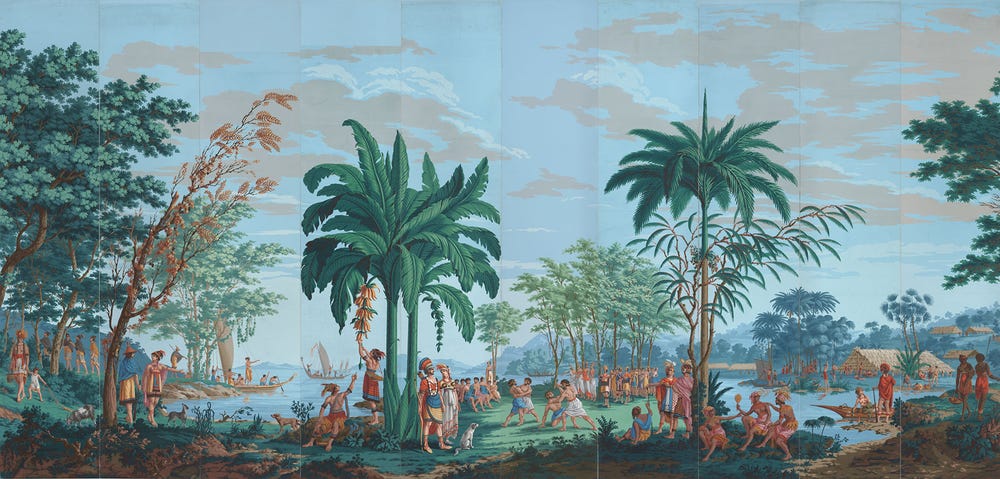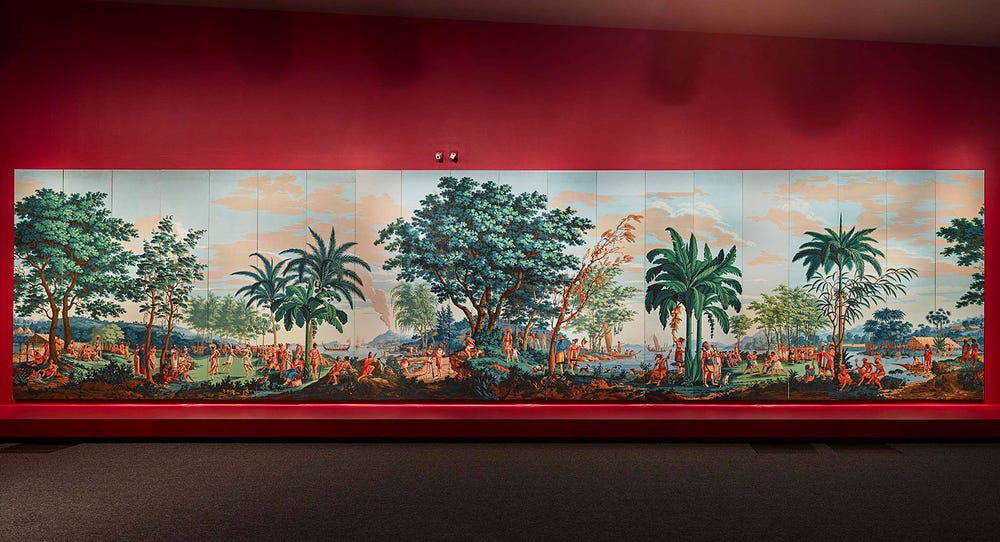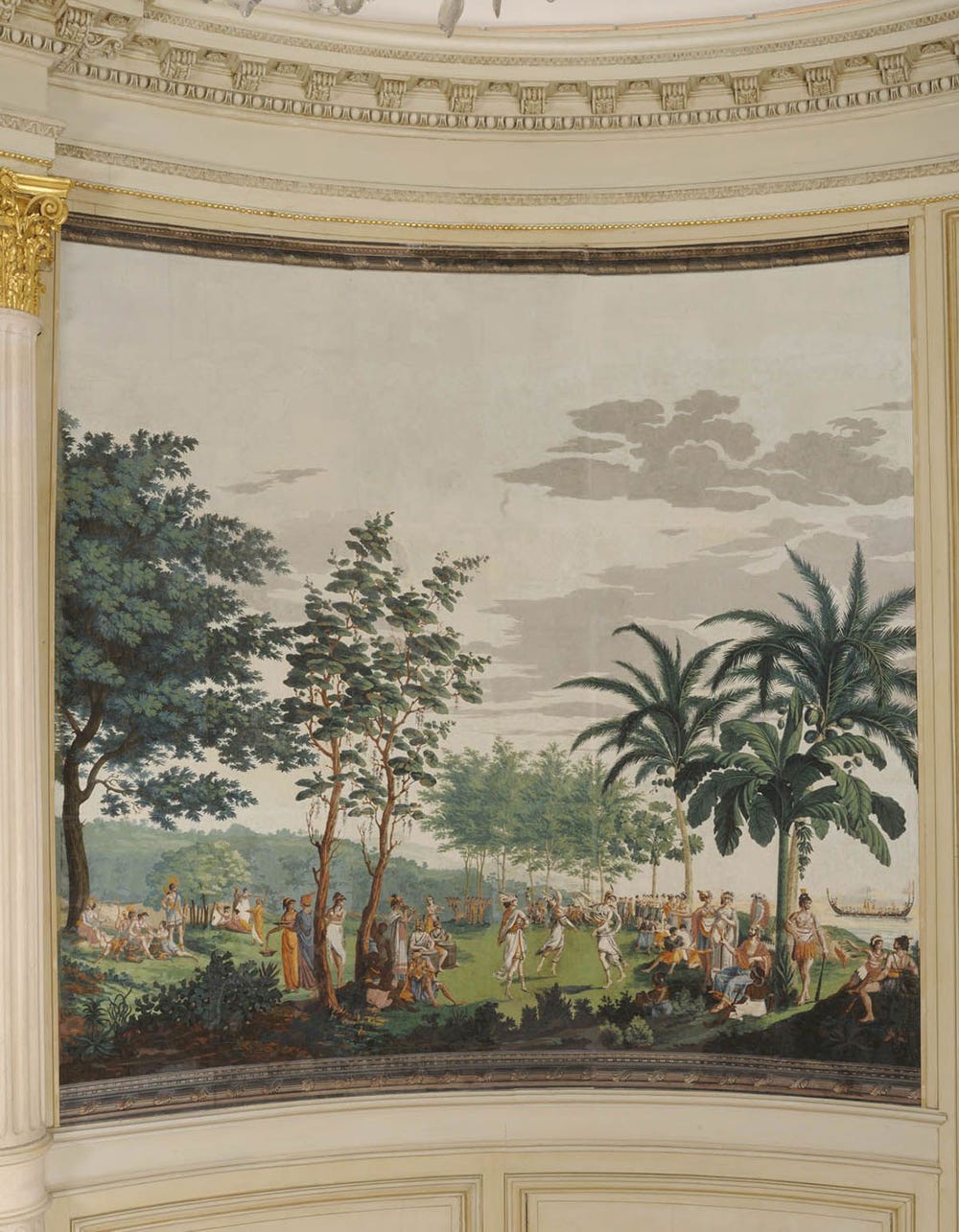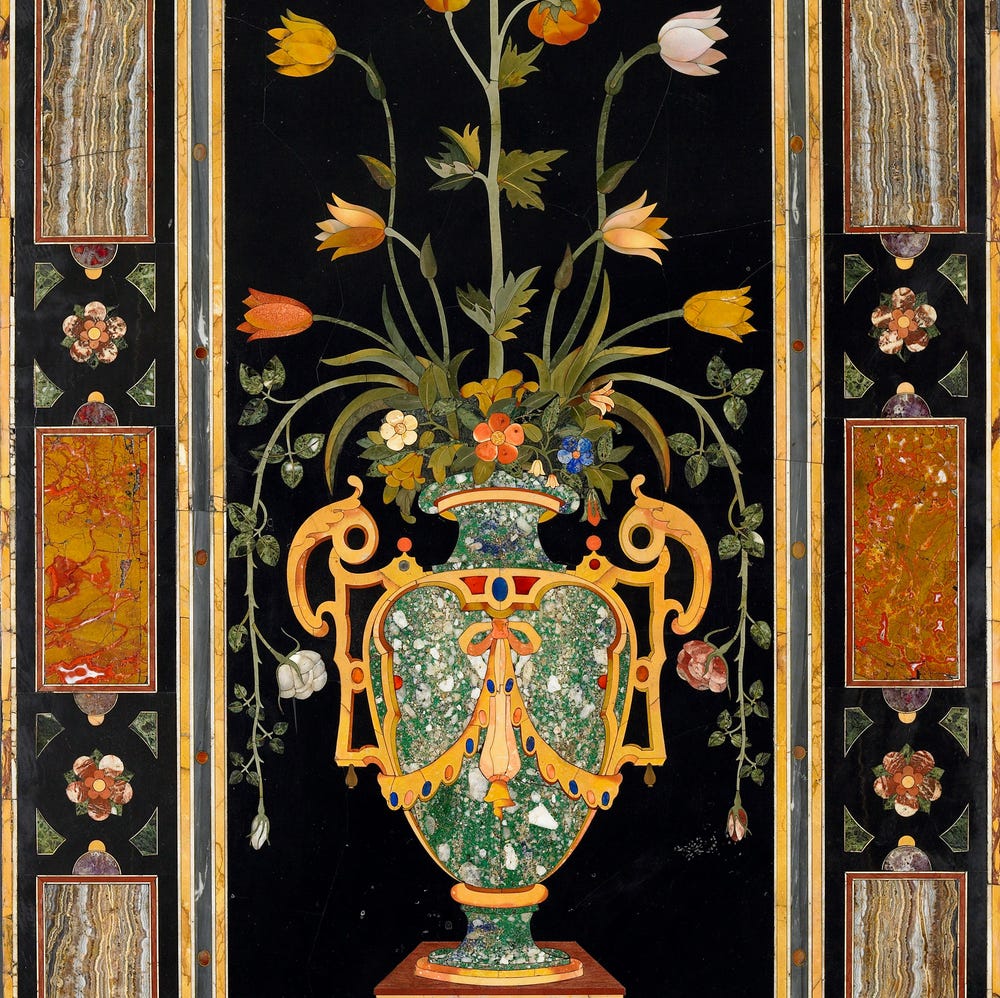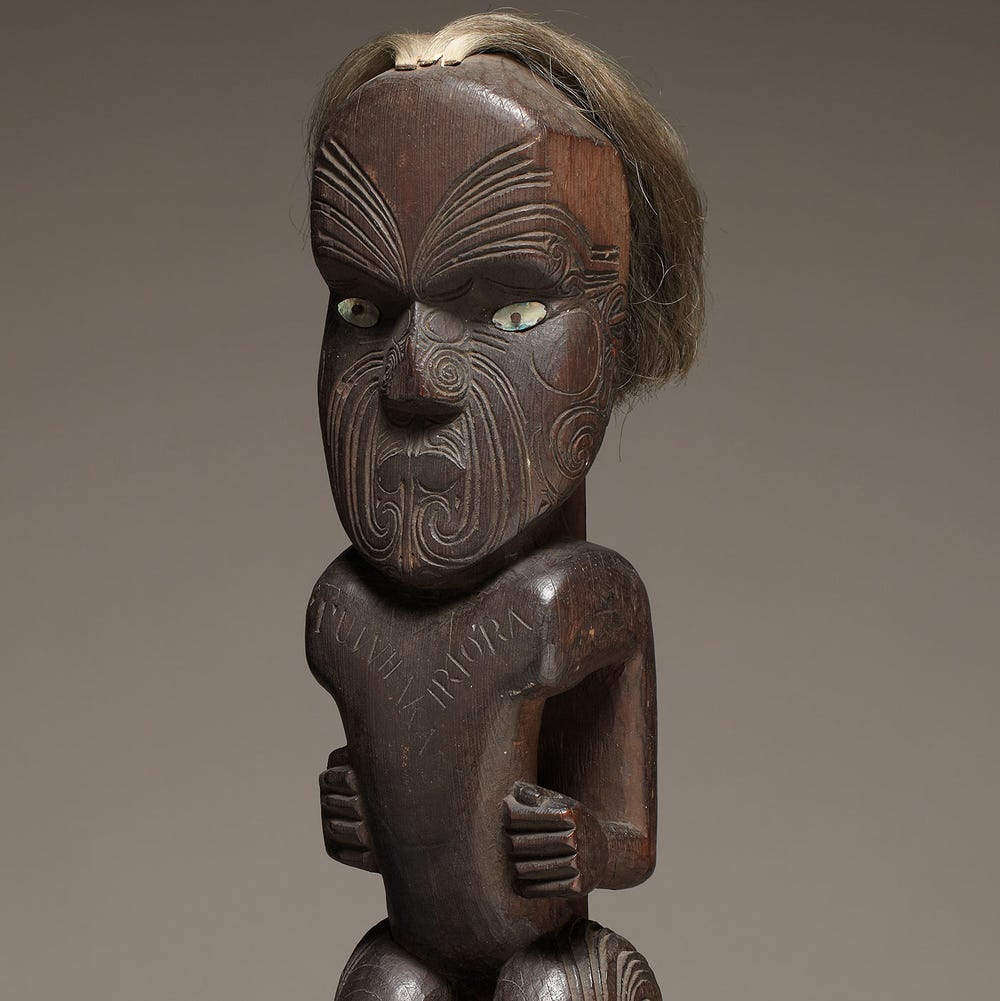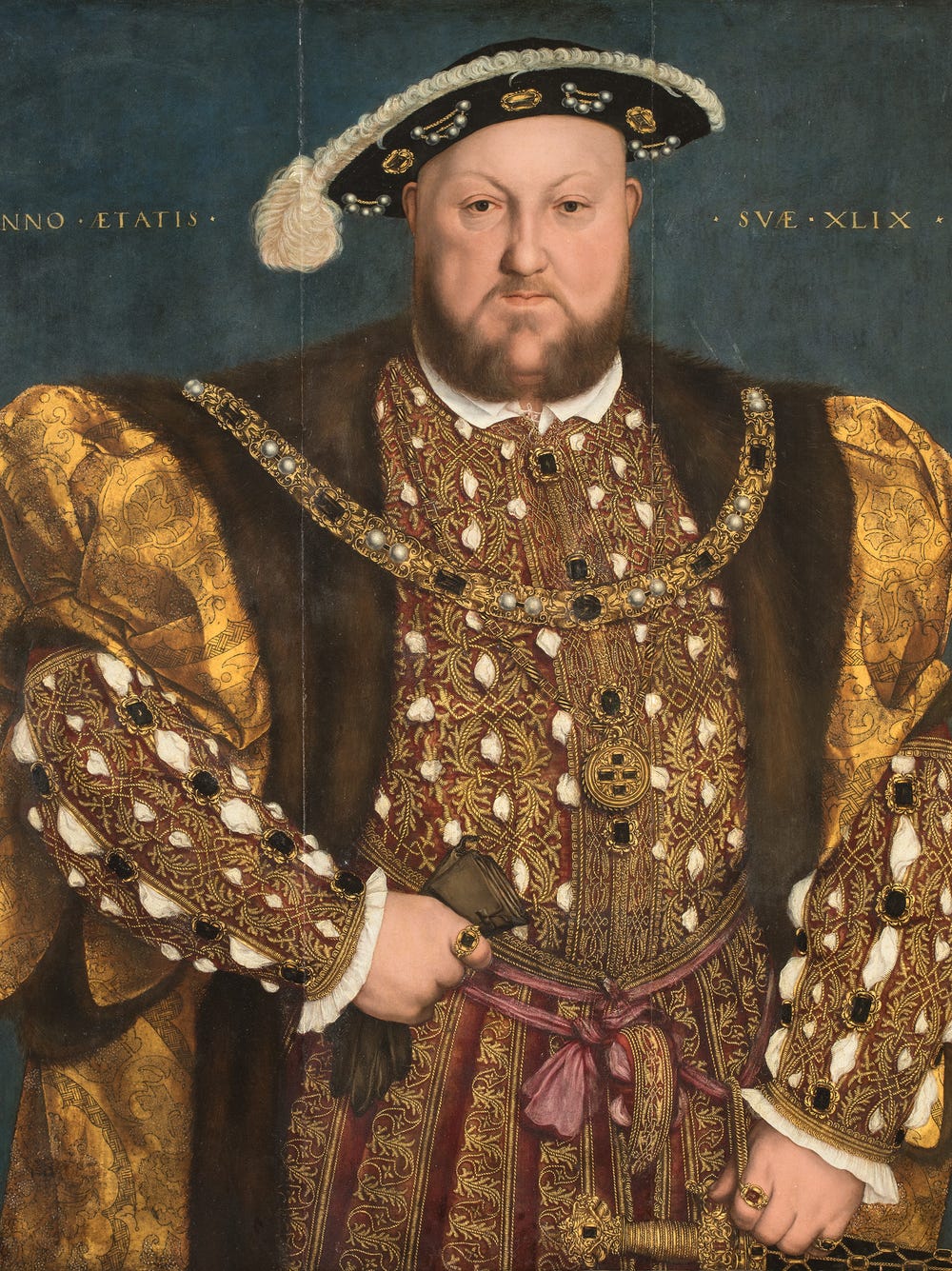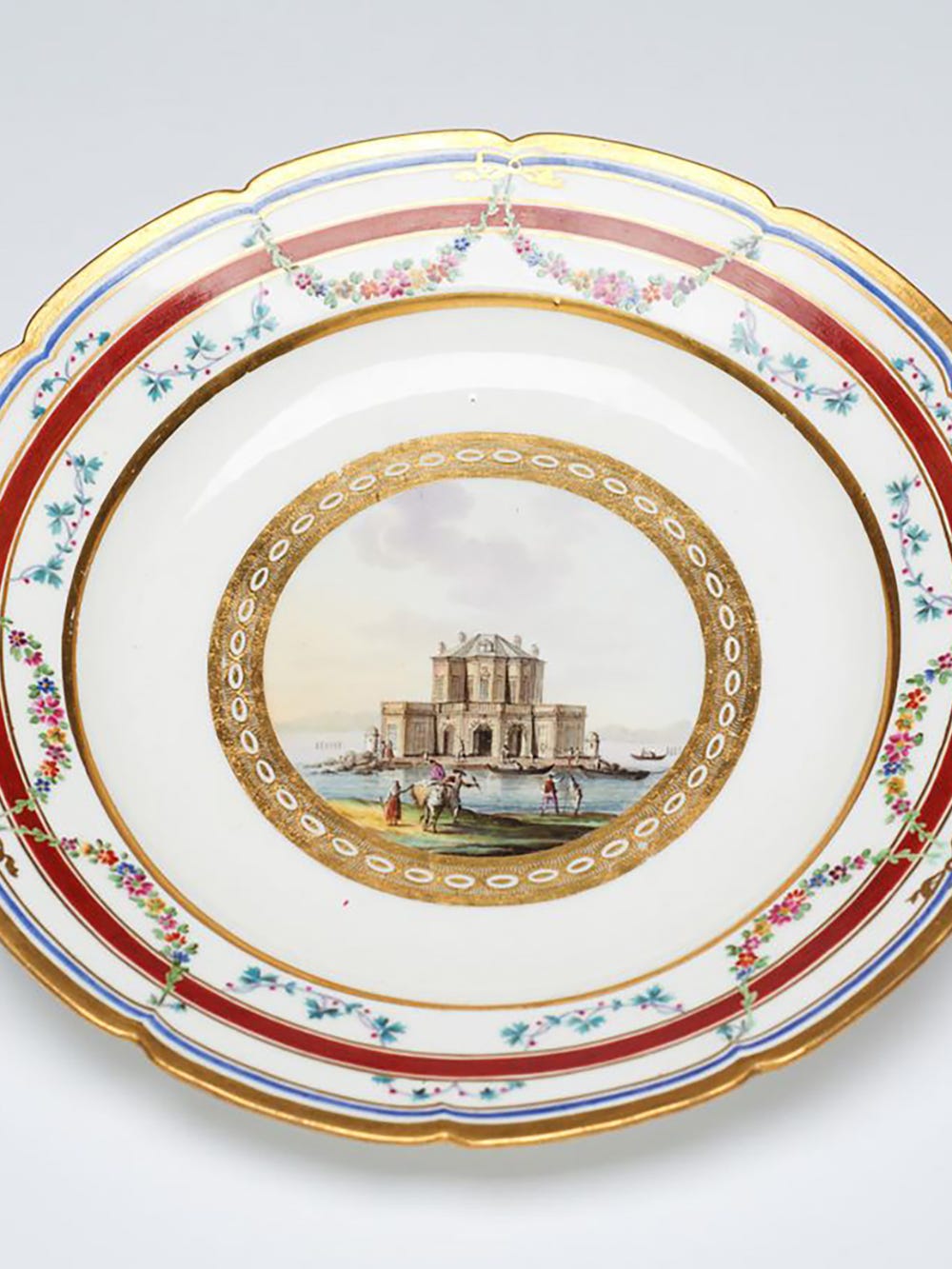A Panoramic Wallpaper of the Peoples of the Pacific
By Martin Chapman and Eve Rosekind
September 16, 2019
In its first exhibition in the continental United States, the artist Lisa Reihana’s extraordinary 70-foot-long video, in Pursuit of Venus [infected] — recently acquired by the Fine Arts Museums of San Francisco — is presented with the French Neoclassical wallpaper (from ca. 1804 – 1806) on which it is based. The experiential video reimagining allows visitors to reflect upon notions about Pacific culture and history that originated with the European voyages of exploration in the 18th-century Age of Enlightenment and persist even today. Below, curators from the European Art department provide more historical context on the wallpaper, Les Sauvages de la Mer Pacifique, which inspired Reihana’s vast work.
Installation view of Les Sauvages de la Mer Pacifique in Lisa Reihana: in Pursuit of Venus [infected] at the de Young museum
First exhibited in Paris in 1806, Les Sauvages de la Mer Pacifique (Native Peoples of the Pacific Ocean) is believed to be one of the first panoramic wallpapers ever created. Designed by Jean-Gabriel Charvet (1750 – 1829) and manufactured in Mâcon, France, by Joseph Dufour (1757 – 1827), this work was the first successful scenic wallpaper of the 19th century, sparking a fashion for this large-scale form of luxury decoration. The wallpaper’s subject appealed to the growing European taste for a perceived idyllic way of life in the South Pacific, aiding in its popularity.
Joseph Dufour, printer, and Jean-Gabriel Charvet, designer, Les Sauvages de la Mer Pacifique (Native Peoples of the Pacific Ocean) (detail), ca. 1804–1806. Block-printed watercolor on paper, each panel: 99 x 211/4 in. (251.5 x 54 cm). Fine Arts Museums of San Francisco, Museum purchase, Gift of Georgia M. Worthington and the Fine Arts Museums Trustees Fund, 77.6.1–20 (panels 8 and 16 reproductions by Garth Benton)
The twenty panels that comprise the work depict the three voyages of British naval captain James Cook (1728 – 1779) to the Pacific, which he undertook from 1768 until his death in Hawai‘i. Charvet based his designs for the wallpaper on drawings and watercolors made for scientific purposes by Cook’s shipboard artists, William Hodges (1744 – 1797) and John Webber (1751 – 1793).
However, the wallpaper representations are anything but geographically and historically accurate. Dufour explains that they were designed with “artistic license . . . to please the eye and to excite the imagination.” For example, the designer freely interpreted the documentary drawings of Pacific Islanders’ attire, deriving inspiration from classical antiquity as well as fashions of the French Empire period.
A section of Les Sauvages de la Mer Pacifique in an architectural setting
Les Sauvages de la Mer Pacifique’s success spread to America, where it became highly prized for interior decoration. The Fine Arts Museums’ own set of 18 wallpaper panels was purchased from the Dodge family of Gorham, Maine, in 1977, under the belief that the panels were never hung in the Dodges’ house but rather stored until the Museums’ purchase. Because of limited light exposure, the panels’ colors remain remarkably brilliant. Reproductions of the two missing panels were commissioned by the Museums after their acquisition and painted by artist Garth Benton. The complete series is concurrently on view with artist Lisa Reihana’s installation in Pursuit of Venus [infected], at the de Young through January 5, 2020.
Text by Martin Chapman, interim curator in charge, European Art; and Eve Rosekind, curatorial assistant, European Decorative Arts and Sculpture
